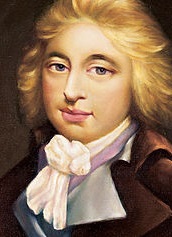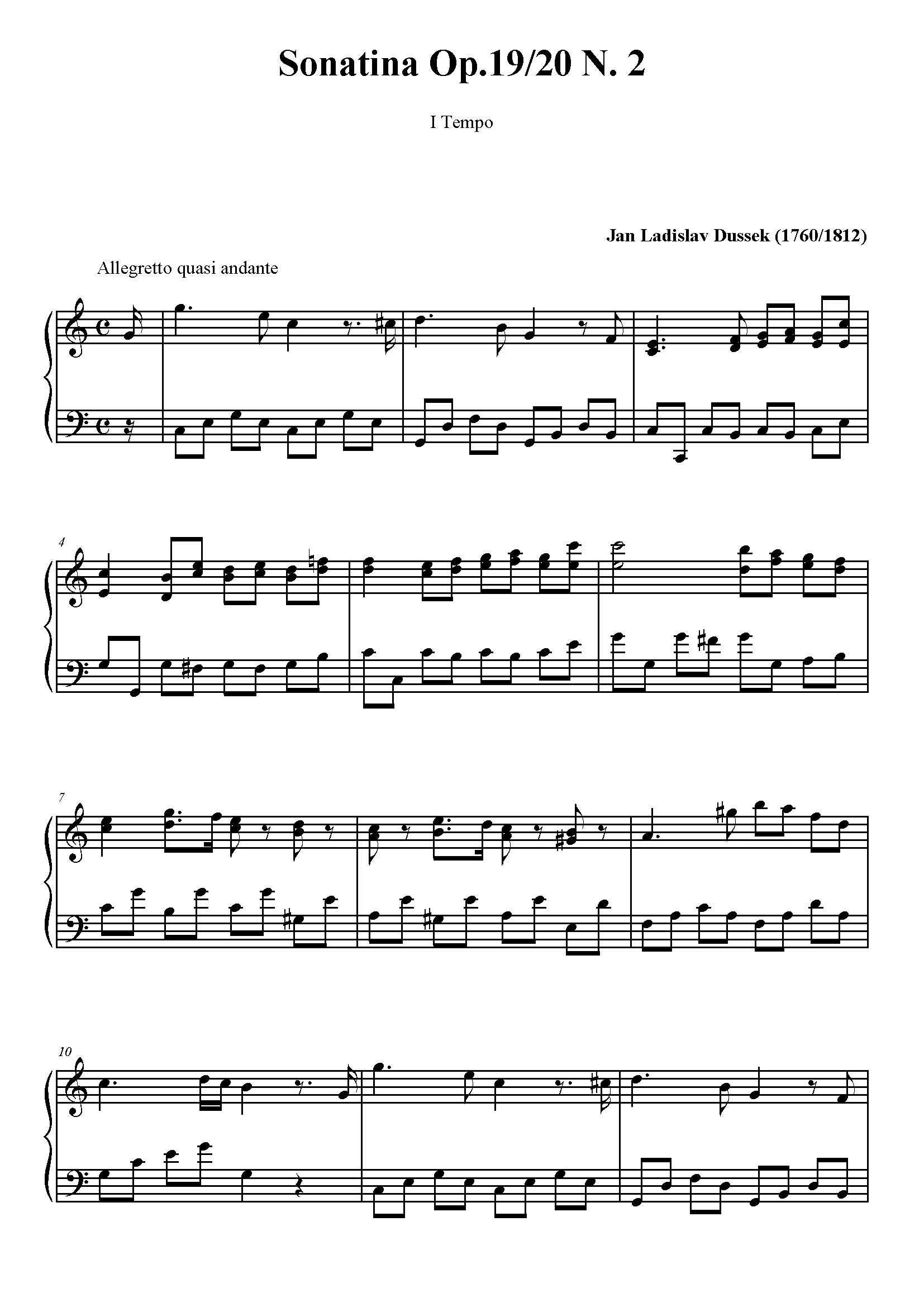Sonatina Op. 19/20 n. 2

Dussek, Jan Ladislav (1760 - 1812)
Sonatina in C Maj. Op. 19 / 20 n. 2
| Sonatina in C Maj. Op. 19 / 20 n. 2 | |||||
| Piano: Tullio Forlenza |
|||||
|
You can purchase these recordings in HD quality (192.000 Hz 24 bit) |
|||||
 |
|||||
To consult different editions of this work go to:
JAN LADISLAV DUSSEK - 6 Sonatinas for Piano, Op. 19 / 20 - IMSLP
HISTORICAL NOTES
This Sonatina in G Maj. Op. 19 / 20 is the second of a group of six sonatinas, originally written for piano with flute accompaniment, published in 1793 in London by Longman & Broderip.
CHARACTERISTICS OF THE PIECE
The Sonatina in C Maj. Op. 19 / 20 n. 2 consists of two Movements:
1st Mov.: Allegretto quasi andante
2nd Mov.: Rondò. Non presto
The first movement of this Sonatina begins with the exposition of a collection of different melodic elements, grouped together and repeated twice.
Then, starting anew with a melodic figure directly derived from the initial notes, a central section begins in a more varied and expressive manner. This new section ends in the dominant key and, with a short chromatic connecting passage, introduces the return of the initial motifs.
To conclude, a very short melodic coda, composed using the rhythmic figure of the central episode, serves to lead us to the final chords.
AI AII B AIII D
The second movement is a larger and more complex Rondò, with its main part built on a design of sliding quatrains with a cheerful and lively character, immediately followed by a first alternative episode that, starting from a more static form of writing, soon evolves into an interesting melodic episode that unexpectedly exploits the characteristic expressiveness of the harmonic minor scale.
The use of the quatrains in this episode and the progressive harmonic movement to the dominant key is conveyed via a beautiful design of thirds to the initial episode.
Following this first reprise, the most interesting episode then unfolds, a wide section that revolves around two cantabile motifs, the first of which is more tonally stable, the second modulating with chromatic moments that make extensive use of diminished chords so as to create an atmosphere of greater expressive tension.
This part is repeated so that the themes are heard twice, before an evolution of the second one drives us to an interrogative suspension, highlighted by a lenghty pause, which announces the coming return of the main episode.
When the last repetition of the main part has finally finished, we still listen to a cadence section that prepares us for the finale of the piece which is characterized by a short duet, the concluding novelty before the final closing.
AI B AII C1 C2 AIII D
PERFORMANCE NOTES
Performing the Sonatina in C Maj. Op 19/20 n. 2 entailed in depth reflection concerning the relationship between style and a cantabile tone, taking into consideration that its expressive climax is suffused with elegant sobriety and never indulges in frivolities or gallantries.
To be able to evoke this atmosphere, I have tried to maintain a balanced relationship between the emotion contained in the piece and the adoption of a sufficiently simple and clear phrasing to showcase it.
At the same time I also tried to accomodate what, in this era, appears to be the birth of a new linguistic rhetoric, observing how, in this and other pieces, the presence of small cadences, sudden changes of musical character, suspensions with the fermata, has become more and more representative of speech and less occasional and effective.
The chosen speeds have always been calculated so as to be linked to the III Level of study and for the purpose of achieving fluidity and discursiveness simultaneously.
CURIOSITY
Some editions adopt the tempo "Presto" for the Rondò and not the original word "Non presto” thereby completely modifying the character of the final movement.
Tullio Forlenza
(Trad.: Sara Rosenman)
